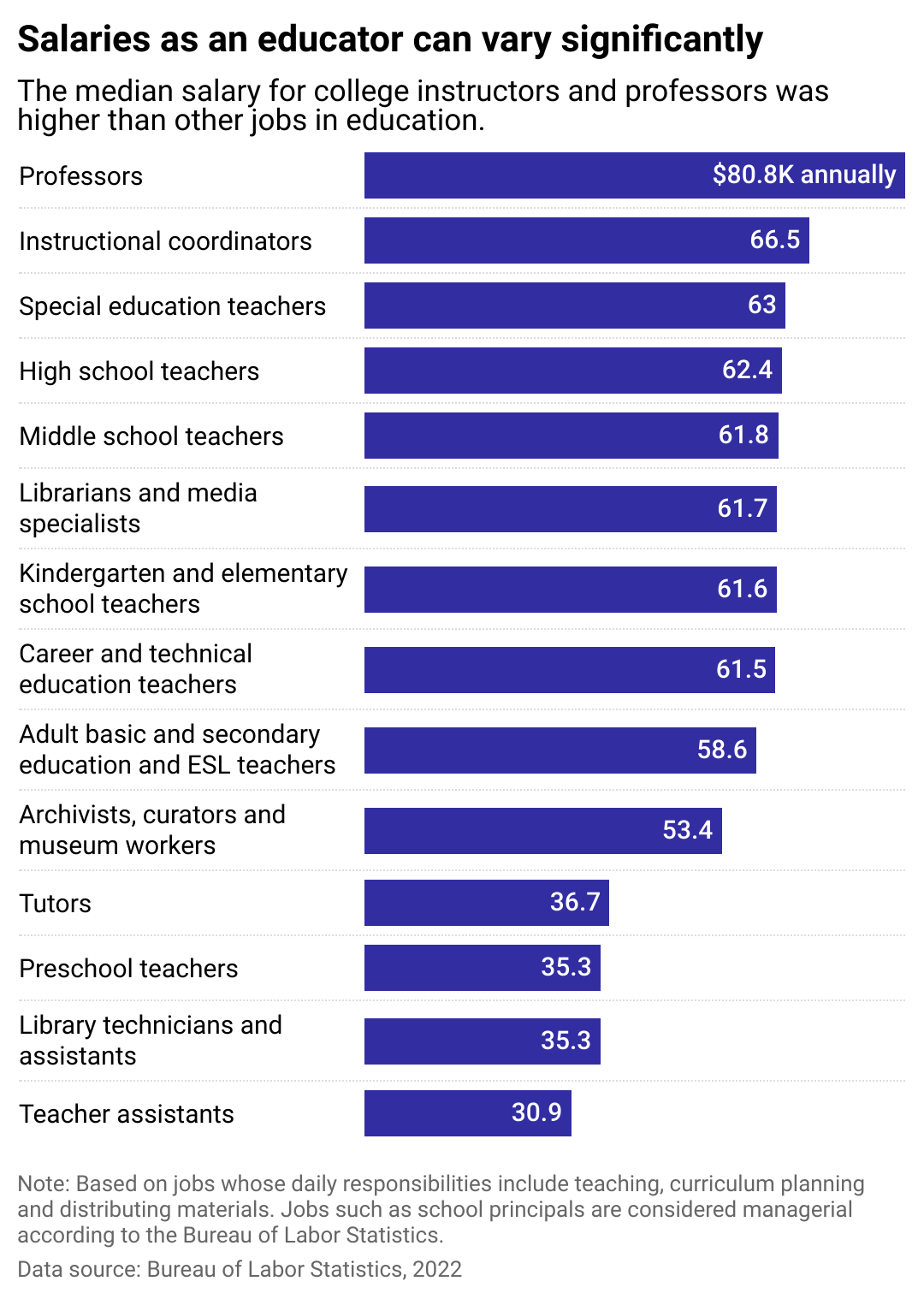
People often ask educators what keeps them going despite the challenges of their sector. "More than anything else, it's the students," Exequiel Hernandez, an associate professor at The Wharton School, told Harvard Business Publishing. Driven to stimulate and inspire students toward various passions and careers, educators feel a deep sense of responsibility and respect for their students.
However, education workers can fall victim to the "passion tax," which puts their commitment to their students and teaching at odds with earning a living wage.
As of 2022, teachers earn 26.4% less than other college-educated workers, the lowest in six decades, according to the Economic Policy Institute. A 2019 Hill-HarrisX survey revealed that voters across the political spectrum agree teachers are not paid enough for their work, which includes many unpaid hours spent planning, grading, and communicating with parents—not to mention paying out-of-pocket for school supplies.
With record-breaking declines in college enrollment, large-scale school worker strikes, teacher shortages, and the setbacks caused by remote learning during the pandemic, education workers are at a crossroads.
Finding a way to earn more in education isn't straightforward, with tasks for other roles in the field differing greatly.
Numerade used data from the Bureau of Labor Statistics, industry research, and news articles to examine annual median pay for 14 jobs in the education industry and efforts to improve pay. It shows a disparate pay scale across the field, from $30,900 for teacher assistants to $80,800 for professors.

Pay for educators varies based on several factors, including the specific role held, geography, experience, education, union involvement, and, according to an American Progress analysis, race and gender. Workers in the education field also have varying benefits, like pensions, flexibility, and "time off" during summer breaks. However, many teachers still need to work during the summer to plan for the year ahead or take on a second job to make ends meet, most of which are outside of education.
Professors earn the highest salaries among educators, pulling in around 2.5 times that of teacher assistants, who make the least in the analysis of 14 jobs in education. Professors' responsibilities reach far beyond planning, teaching, and grading assignments. They may also be required to specialize heavily in their topic of study by actively conducting and publishing research and writing grants to support the work while bolstering their institution's reputation.
With a median wage of $89,130, education administrators earn more than professors. Their tasks significantly impact schools, including financial management, oversight of student outcomes, and human resources.
Compensation for tutors takes a sharp dip in the pay scale, with educators earning an average of $36,700. Tutors help students learn and understand concepts, complete assignments, and prepare for exams through one-on-one teaching in specific subjects. Tutoring programs were heavily funded during the pandemic to make up for learning losses, and an analysis by Stanford's National Student Support Accelerator reported that, as of November 2023, 26 states have enacted rules to ensure quality is maintained.
Librarian pay isn't discussed nearly as much as teacher pay—however, these roles rank second-lowest in the analysis of BLS data. On average, library technicians and assistants earn $35,300 a year to help students conduct research, create databases for organizing library materials, and source new books.
The salaries of early childhood teachers rank the lowest among educators, even though they prepare children for their academic journey with essential numeracy, literacy, and critical thinking lessons. They inspire self-expression, teach communication and emotional intelligence, and share skills kids need to develop and grow.
The government is stepping in to help the education sector, but the effects aren't yet closing the widening gap. By February 2022, the National Conference of State Legislatures reported that 25 states had enacted or proposed legislation to increase teacher compensation. On a national level, the Department of Health and Human Services is working to raise wages by $10,000 on average for qualifying education sector workers, including teachers, janitors, and classroom aides.
Story editing by Zeynep Güler Tuck. Copy editing by Kristen Wegrzyn.
This story originally appeared on Numerade and was produced and distributed in partnership with Stacker Studio.